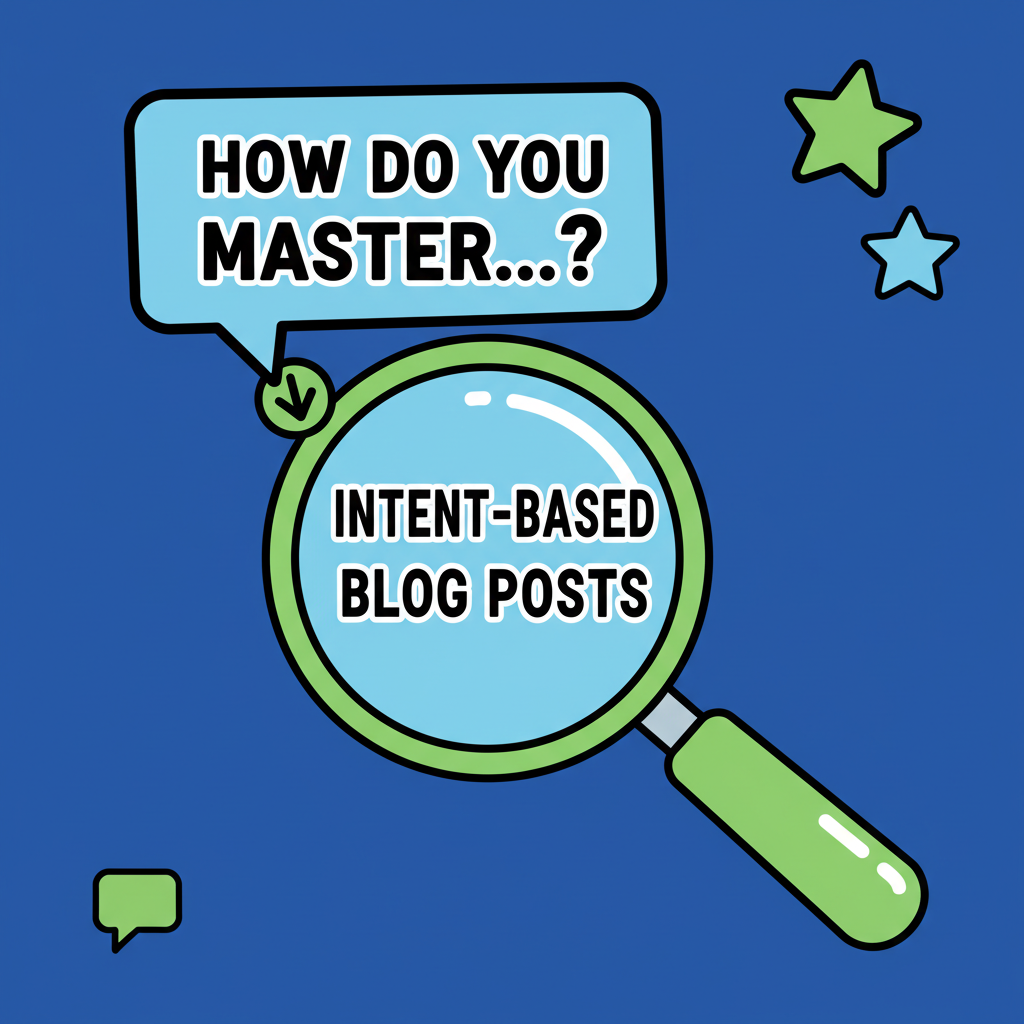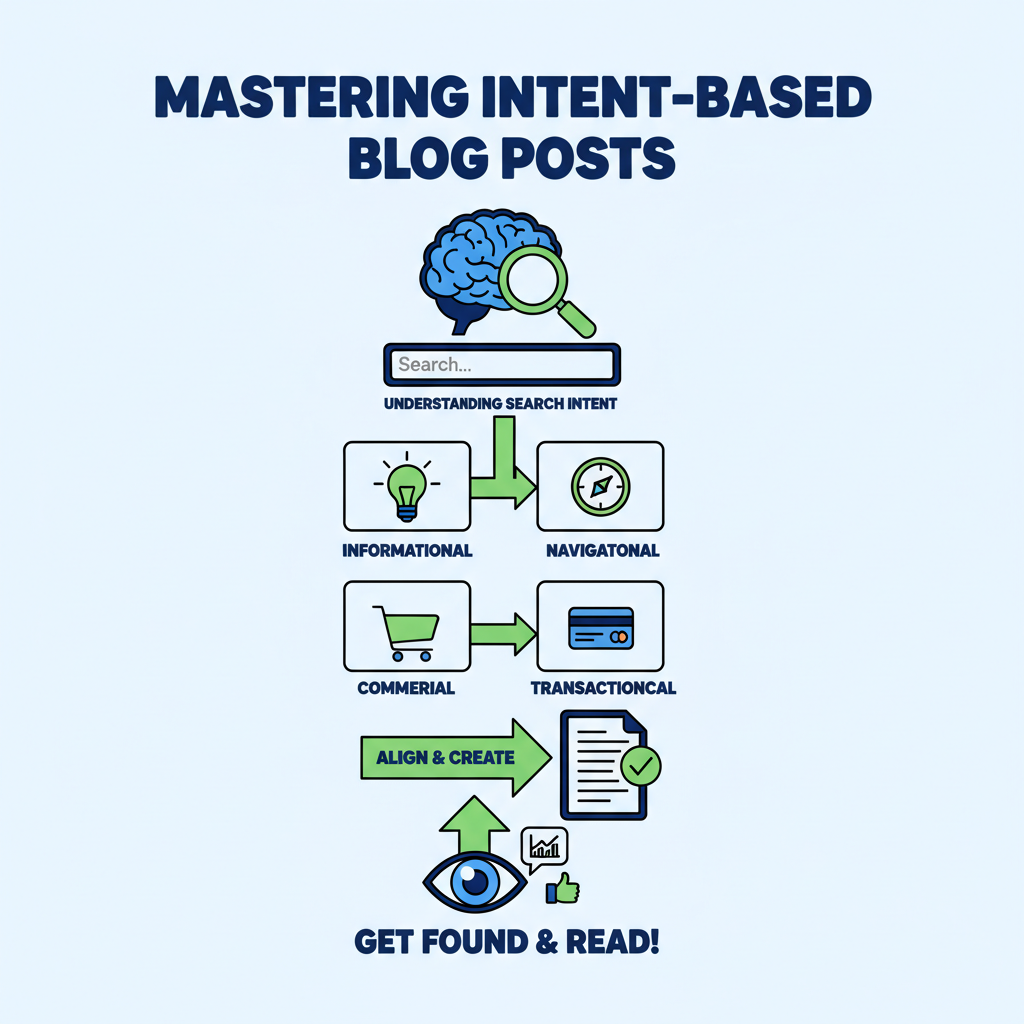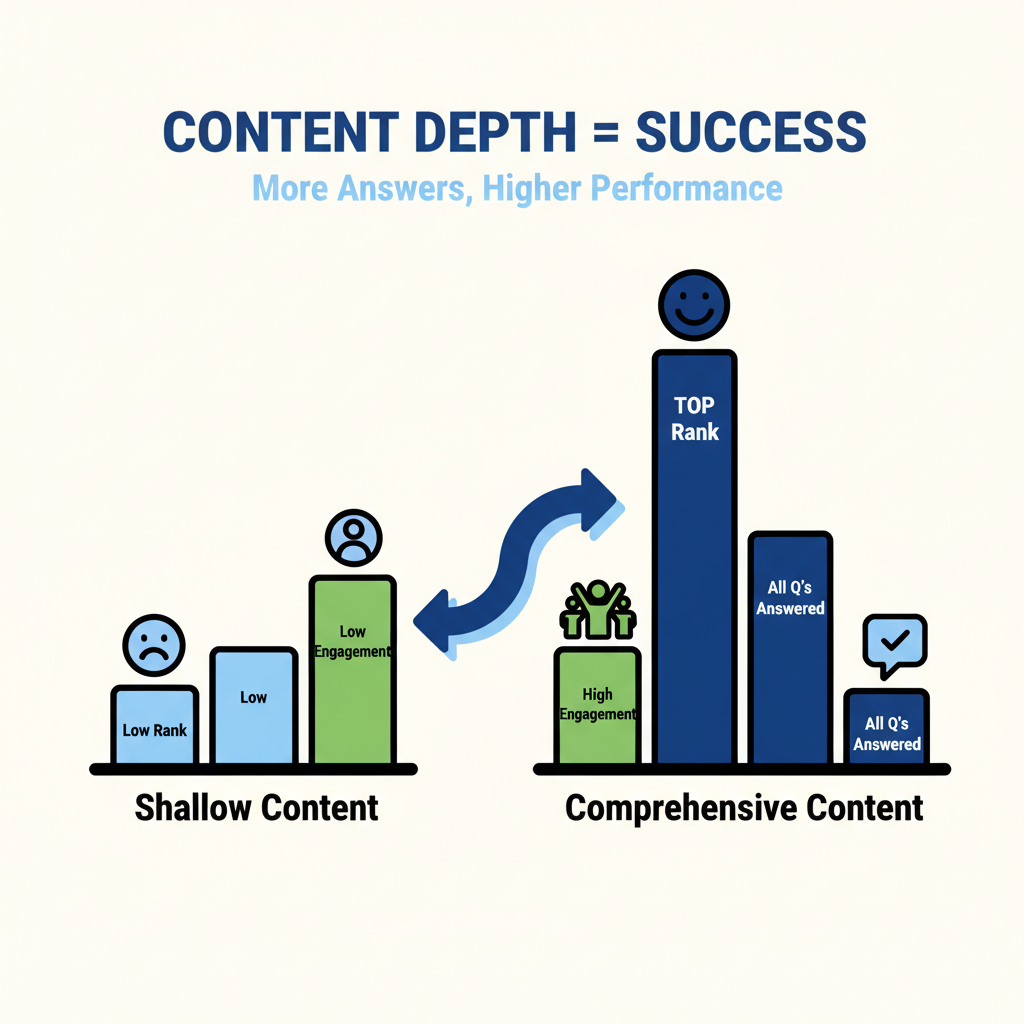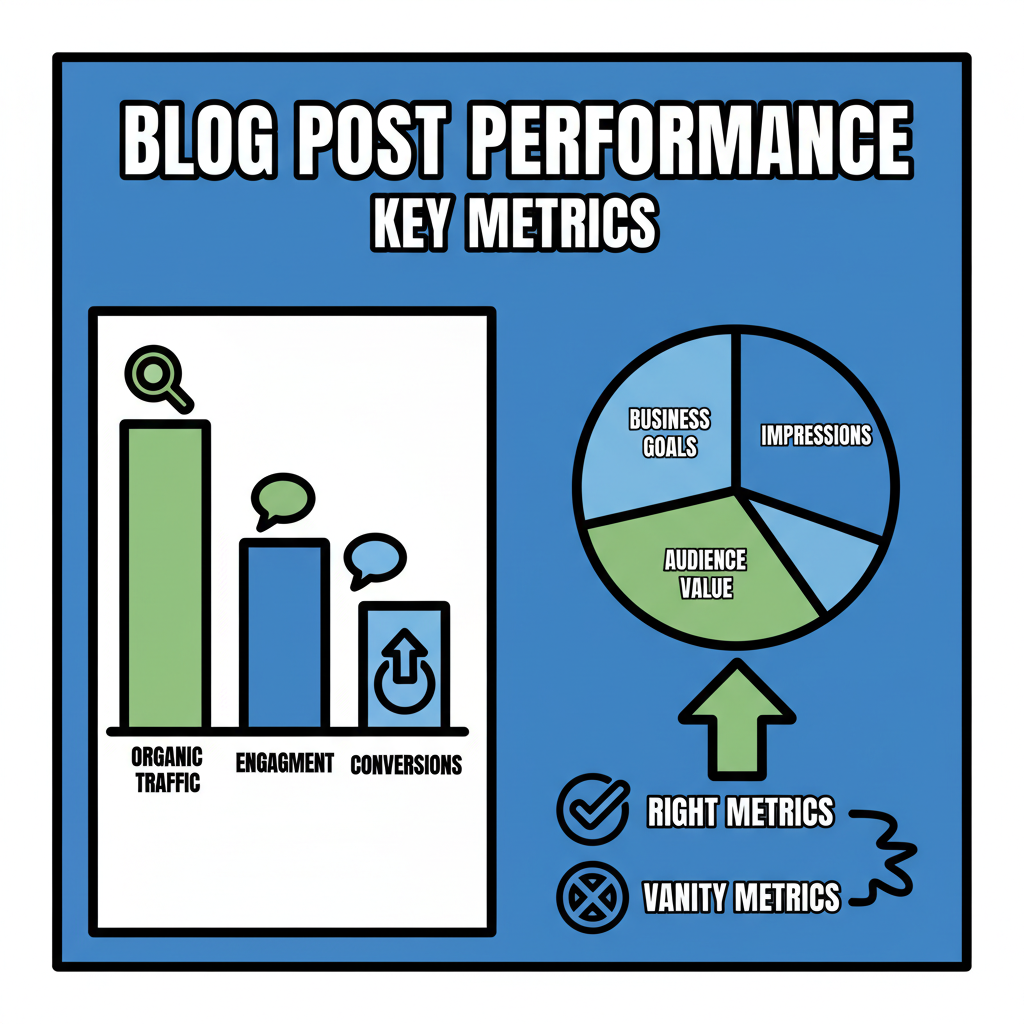1. How Do You Master Intent-Based Blog Posts Creation?
Posted by
8 Essential Blog Posts Strategies That Drive Organic Traffic in 2025

Creating successful blog posts has evolved far beyond simply putting words on a page. In today's competitive digital landscape, your blog posts need to be strategically crafted to capture both search engine attention and reader engagement. This comprehensive guide reveals eight proven strategies that will transform your blog posts into organic traffic magnets, helping you build a sustainable content marketing engine that delivers measurable results.
1. How Do You Master Intent-Based Blog Posts Creation?

Understanding search intent is the foundation of creating blog posts that actually get found and read. Every search query falls into one of four categories: informational, navigational, commercial, or transactional. Your blog posts must align perfectly with what searchers are actually looking for when they type in your target keywords.
Start by analyzing the top-ranking blog posts for your target keywords. Look at their structure, content depth, and the specific questions they answer. This research reveals the exact intent behind searches and shows you what Google considers valuable content for those terms. Use tools like Google Search Console to identify which of your existing blog posts are getting impressions but not clicks, then optimize them to better match search intent.
The most successful blog posts in 2025 go beyond surface-level topics. They provide comprehensive answers that satisfy the complete user journey. If someone searches for "how to start a blog," they don't just want setup instructions. They want to understand platforms, costs, design considerations, and content strategies all in one place.
2. What Makes Blog Posts Structure SEO-Friendly?
The architecture of your blog posts directly impacts both user experience and search engine rankings. A well-structured post guides readers through your content logically while sending clear signals to search engines about your content hierarchy and relevance.
Your blog posts should follow a predictable structure that includes an engaging introduction, clearly defined sections with descriptive headings, and a conclusion that reinforces key takeaways. Each section should focus on one main concept, making it easy for readers to scan and find the information they need. Use H2 tags for main sections and H3 tags for subsections, creating a clear content hierarchy.
How Should You Optimize Blog Posts Headers?
Headers serve as roadmaps for both readers and search engines. Your H2 and H3 tags should include relevant keywords naturally while clearly describing what each section covers. Avoid generic headers like "Introduction" or "Conclusion." Instead, use descriptive headers that tell readers exactly what they'll learn, such as "How to Research Keywords for Blog Posts" or "Why Blog Posts Fail to Generate Traffic."
3. How Can You Leverage Automated SEO for Blog Posts?
Automated SEO tools have revolutionized how we optimize blog posts for search engines. These tools can analyze your content in real-time, suggest improvements, and help you maintain consistency across all your blog posts without manual oversight of every detail.
Modern automated SEO platforms can analyze your blog posts for keyword density, readability, meta tag optimization, and internal linking opportunities. They provide actionable recommendations that help you optimize each post before publication. However, the key is using these tools to enhance human creativity, not replace it.
The most effective approach combines automated SEO insights with human judgment. Use automation to identify technical optimization opportunities, track performance metrics, and maintain consistency across your blog posts. According to Moz's research on SEO automation, websites using automated SEO tools see an average 40% improvement in organic visibility when combined with quality content creation.
| Blog Posts Optimization Element | Manual Approach Time | Automated Approach Time | Accuracy Improvement |
|---|---|---|---|
| Keyword Analysis | 45 minutes | 5 minutes | 85% |
| Meta Tag Optimization | 20 minutes | 2 minutes | 92% |
| Internal Link Suggestions | 30 minutes | 3 minutes | 78% |
| Content Readability Check | 25 minutes | 1 minute | 88% |
4. What Content Depth Do Successful Blog Posts Require?

Comprehensive blog posts consistently outperform shallow content in search rankings and user engagement. The most successful blog posts provide complete coverage of their topics, answering not just the primary question but also related questions that readers might have.
Research shows that longer blog posts (1,500+ words) tend to rank higher in search results, but length alone isn't the answer. Your blog posts need to provide genuine value throughout their entire length. Every paragraph should contribute meaningful information that helps readers achieve their goals.
Create blog posts that serve as definitive resources for their topics. Include examples, case studies, actionable tips, and relevant statistics that support your points. When readers finish your blog posts, they should feel confident that they have all the information they need to take action or make informed decisions.
5. How Do You Build Internal Linking Networks Between Blog Posts?
Internal linking is one of the most underutilized strategies for improving blog posts performance. A strategic internal linking structure helps search engines understand your content relationships while keeping readers engaged with your website longer.
Create topic clusters by linking related blog posts together. When you publish a new post about email marketing, link to your existing blog posts about lead generation, content marketing, and marketing automation. This creates a web of related content that establishes your authority on broader topics.
The anchor text you use for internal links should be descriptive and keyword-rich. Instead of using generic phrases like "click here" or "read more," use specific descriptions like "our guide to optimizing blog posts for SEO" or "advanced strategies for blog posts promotion."
6. Why Is Blog Posts Promotion as Important as Creation?
Creating excellent blog posts is only half the battle. Without strategic promotion, even the best content can languish in obscurity. Successful blog posts require multi-channel promotion strategies that amplify their reach and drive consistent traffic over time.
Develop a promotion checklist for every blog post you publish. Share on social media platforms where your audience is active, send to your email subscribers, and reach out to industry contacts who might find the content valuable. Consider repurposing blog posts content into different formats like infographics, videos, or podcast episodes to maximize their reach.
According to research from Content Marketing Institute, companies that promote their blog posts across multiple channels see 300% more traffic than those relying solely on organic discovery. The key is consistent, strategic promotion rather than one-time publishing and hoping for the best.
7. How Should You Measure Blog Posts Performance?

Tracking the right metrics helps you understand which blog posts strategies are working and where you need to improve. Focus on metrics that align with your business goals rather than vanity metrics that look impressive but don't drive results.
Key performance indicators for blog posts include organic traffic growth, time on page, bounce rate, social shares, and conversion rates. Use Google Analytics to track how readers interact with your content and identify patterns in your most successful posts.
Set up conversion tracking to understand which blog posts are actually driving business results. Whether your goal is email signups, product sales, or service inquiries, knowing which content converts helps you create more effective blog posts in the future.
8. What Emerging Trends Will Shape Blog Posts in 2025?
The blog posts landscape continues evolving with new technologies and changing user behaviors. Voice search optimization is becoming increasingly important as more people use smart speakers and voice assistants to find information online.
Artificial intelligence is changing how people discover and consume blog posts content. Search engines are getting better at understanding context and user intent, which means your blog posts need to focus more on providing comprehensive, helpful information rather than just targeting specific keywords.
Interactive content elements are becoming more important for blog posts engagement. Consider incorporating polls, quizzes, calculators, or interactive tools that make your content more engaging and shareable. These elements also provide valuable data about your readers' preferences and needs.
Conclusion
Successful blog posts in 2025 require a strategic approach that combines quality content creation with technical optimization and strategic promotion. By implementing these eight essential strategies, you'll create blog posts that not only rank well in search engines but also provide genuine value to your readers.
The key to long-term success with blog posts is consistency and continuous improvement. Monitor your performance metrics, stay updated with SEO best practices, and always prioritize your readers' needs. Remember that the best blog posts solve real problems and provide actionable insights that readers can implement immediately.
Ready to transform your blog posts strategy? Start by auditing your existing content using these eight strategies, then create a systematic approach for implementing these improvements across all your future blog posts. Your organic traffic growth depends on the actions you take today.